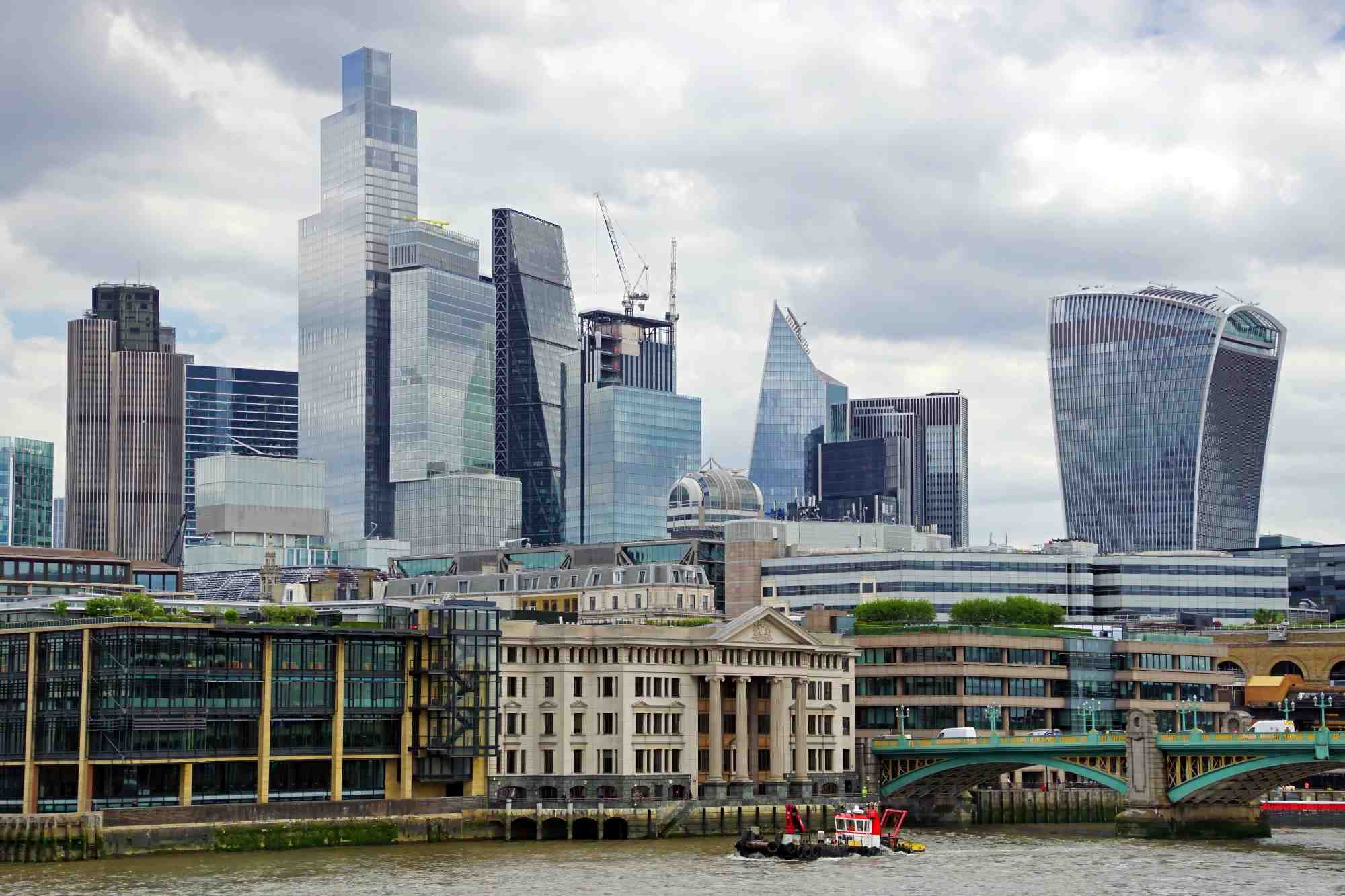This morning, the ONS has released the latest UK inflation data, for the month of October showing a hike from 1.7% last month to 2.3% this month – slightly higher than had been expected. UK inflation is now above the Bank of England’s 2% target and has therefore dented hopes of further interest rate cuts this year – a blow for borrowers just ahead of Christmas. The ONS said that the main driver of this latest inflation hike was a rise in energy bills.
Sharing their reaction to these inflation data and what it might mean for the direction of interest rates, experts from across the industry have been commenting as follows:
Commenting on the latest CPI data from the ONS, Abhi Chatterjee, Chief Investment Strategist at Dynamic Planner said: “Like an unwanted sequel, inflation is back. The annual consumer price index, according to the ONS, rose from 1.7% in September to 2.3% in October. Though unwelcome, this rise was expected with a 10% increase in energy price cap, in addition to higher gas prices. Services inflation was higher than expected at 5% – this is an important input in the decision-making process for the Bank of England when deciding about the future trajectory of interest rates, given that UK is primarily a service driven economy.
“In general, service inflation has proved to be stickier and is expected to hover around this mark for a bit longer. This latest reading of the price gauge reduces the chances of a pre-Christmas rate cut. While the Bank has already signalled its intent on taking a gradual approach to cutting interest rates, it will be even more cautious in its approach as it waits for the policies laid out in the October Budget to take hold. There are endless debates as to what the real impact is going to be but what matters more is the consumer and what he or she perceives these impacts to be. Should the consumer feel embattled, the path to recovery and growth could possibly be an especially arduous one.”
Commenting on these data, Lindsay James, investment strategist at Quilter Investors said: “Last month’s surprise fall in inflation, which left it below the Bank of England’s 2% target for the first time in over three years, has proven very short lived. This morning’s inflation figure from the ONS reveals UK inflation jumped to 2.3% in the 12 months to October 2024, up 0.6% compared to the 1.7% rise in the 12 months to September.
“Energy prices take some of the blame, after the Ofgem price cap on household bills lifted by nearly 10% last month, but other areas including the services sector have also contributed to the uptick, and the retail sector has also warned of potential inflationary pressures in the near future. Just yesterday, a group of 80 of the UK’s biggest retail bosses wrote to the Chancellor to air their concerns around the consequences of the changes announced at the budget. They warned that higher business costs, driven by increased employer national insurance contributions and the national living wage rise would need to be passed on to shoppers and could also impact employment and investment.
“Comparatively, in the US the Federal Reserve has seen an uptick in inflation which could result in a pause on rates, but growth has remained robust and is indeed at least part of the cause of this. Whereas, in the UK, the focus has been more on rising cost pressures, including uncomfortably high core inflation, while GDP prospects have barely moved.
“The Bank of England opted to cut rates again at its latest monetary policy meeting, but with inflation, wage growth and unemployment all on the rise, while stalling GDP continues to highlight the malaise the UK finds itself in, the pace of future cuts is looking much less certain. Expectations for further cuts have been scaled back considerably, with rates expected to remain above 4% throughout 2025.
“With just one more MPC meeting before year end, it is looking increasingly likely that the Bank will close out 2024 with a hold on rates. This is a clear reminder that short term inflationary pulses may return, potentially caused by factors such as obstacles to trade, labour market tightness, taxation and volatility in food and energy prices. Whether October’s uptick in inflation proves to be just a blip remains to be seen, however it seems more likely that the Bank may err on the side of caution in coming months as a growing list of inflationary risks emerge on the horizon.”
Daniel Casali, Chief Investment Strategist at wealth management firm Evelyn Partners, said: ‘The uptick in in October’s inflation number from September was led by a 9.5% hike in energy regulator Ofgem’s price cap for the fourth quarter. While the annual figure shows that inflation has ticked back above the Bank of England’s 2% inflation target rate, it is still within the acceptable 1 to 3% latitude, and the lid on inflation remains broadly intact.
‘In the details, perhaps of most concern to the monetary policy committee is that services CPI inflation remains elevated at 5.0% year-on-year. Within services, there are still pockets of inflation in rents and a couple of new areas to watch out for where the embers of inflation could flare up. Education prices are set to jump as VAT on school fees are introduced in January, and sewage prices and vehicle excise duty could drive up services inflation from April.
‘All goods CPI inflation came in at -0.3% year-over-year, a narrowing from -1.4% in September, to reflect higher energy prices.
‘The BoE expects inflation to accelerate to a cyclical peak of 2.8% by the third quarter of 2025 before slowing to 1.8% by the end of 2027. Overall, despite some concerns about pockets of inflation, this is unlikely to stop the BoE from cutting interest rates.
‘For investors, gilt yields have adjusted upwards to reflect a potentially slower approach by the BoE in cutting interest rates. Other factors such as increased issuance post the Budget have also put upward pressure on gilt yields. Nevertheless, short-term two-year gilt yields of around 4.2% look relatively attractive given the uncertain outlook for the UK economy. ‘
Focusing on the impact today’s data may have on the mortgage market, Rachael Hunnisett, director, longer-term lender April Mortgages, comments: “Inflation soaring back above the Bank of England’s 2% target is a fresh blow for borrowers, effectively ruling out any chance of a base rate cut in December. The Bank has previously indicated that lower inflation would help to drive further rate cuts, but this spike changes the economic outlook.
“Mortgage rates have been creeping up since the Budget and may be further impacted as a result of today’s announcement, which is higher than most market expectations. These recent rate changes are a sign of how quickly the mortgage market can reverse course.
“Borrowers should avoid making decisions based on speculation as there is never any guarantee which way rates will go.”
Colin Graham, Head of Multi Asset Solutions, Robeco said: “The rise in the UK CPI (% chg yoy) has raised questions about the path of interest rates into 2025. The October print was 2.3% up from 1.7% in September, however the BoE and economist consensus (Source: Bloomberg) expectations were both 2.2%, so the surprise to investors was limited. Difficult to disentangle the gilt reaction from the US treasury market, but UK real yields rose and long end yields rose more than short end (curve steepened)
“The main reason was the rising household energy costs compared to 12 months ago, when prices were falling. More importantly services inflation (5% yoy) was broadly flat compared to October.
“From our perspective, the disinflationary trend is in place, but the next phase of the inflationary path will be more mixed. In isolation the CPI rise does nothing to change the interest rate path of BoE, consensus is for hold in December 2024 meeting and the next cut to happen at February 2025 meeting.”
Ed Monk, Associate Director, Fidelity International, comments: “Inflation rising back above target is a blow to households still coping with prices significantly higher than a few years ago. Those prices are unlikely to fall back to previous levels, so families need a combination of lower inflation and wage increases to claw back their buying power. In that context, today’s reading is a setback even if it was largely expected.
“Higher inflation is a blow to savers and investors, too, who will see the real return they achieve fall. Savers have enjoyed an extended period where interest has exceeded price rises, and fund purchases by our clients demonstrate this appetite for cash and cash-like assets, with cash and short-maturity bond funds featuring highly in the list of best-sellers this year. Inflation-beating interest on cash will no doubt have likely tempted some investors to move money from investments into savings accounts.
“That appeal is eroded by higher inflation, even if cash interest is likely to exceed inflation for a while longer. Meanwhile, there are signs that cuts to interest rates – including cash interest – may not be as rapid as recently expected. In that context, it may be time to rebalance your allocation of cash versus investments.”
Kirsty Watson, chief operating officer at abrdn adviser, said: “The two per cent target wasn’t held for long, and it could be as late as mid 2027 by the time inflation sustainably returns to this level, according to the Bank of England’s own forecasts.
“These are still very volatile circumstances. Factors that could have a further impact on prices are still yet to materialise.
“For savers and investors, particularly those in drawdown, it will be very important to continue closely monitoring inflation levels and risk levels to help plan ahead. As always, advisers will play a critical role in this process.”
George Lagarias, Chief Economist at Forvis Mazars said: ““More bills, less fun” was literally the message from the October inflation print. Prices rose across most categories, save “recreation and culture”. While the final figure, 2.3%, was very close to expectations, it still marks the official end of inflation coming down on previous dynamics. New initiatives will have to be undertaken if headline inflation is to stabilise around or below 2%, at a time when the Bank of England is more concerned about growth and has entered a rate cut trajectory. We think it is very unlikely that the BoE will cut rates in December, especially after this release, and we wouldn’t be surprised to see rate expectations for the end of 2025 tilting on the upside again.”
Scott Gardner, investment strategist at J.P. Morgan owned digital wealth manager, Nutmeg, said: “UK inflation firmly rebounded over the course of October, and now tracks above the Bank of England’s target. This rise was expected, reflecting an increase in the Ofgem energy price cap which added £12 to an average household gas and electricity bill from the start of the month. However, beneath the surface, this latest data presents a mixed view of the UK economy for central bankers: with Core CPI tracking upwards since the last reading of the data. Services inflation, closely watched by Bank of England policymakers, was higher year-on-year from the month before.
“This rise was factored in by the Bank of England but there is some uncertainty surrounding the outlook for the UK economy and interest rates after this latest round of economic data and the Autumn Budget. Wage growth needs to slow further and feed through into services inflation in order to convince markets that further rate cuts should be priced in. Another rate cut before Christmas is now in doubt and markets expect only two more cuts of 25bps by September 2025.”








![[UNS] tax](https://ifamagazine.com/wp-content/uploads/wordpress-popular-posts/788955-featured-300x200.webp)
![[uns] house of commons, parliament](https://ifamagazine.com/wp-content/uploads/wordpress-popular-posts/788873-featured-300x200.webp)




